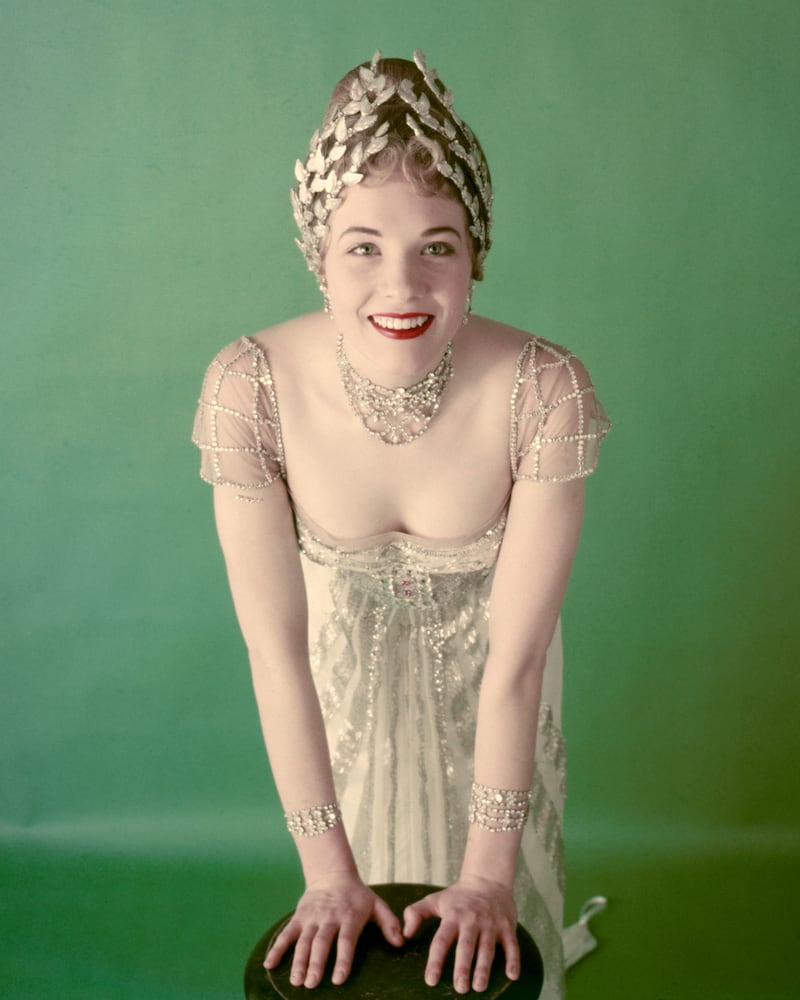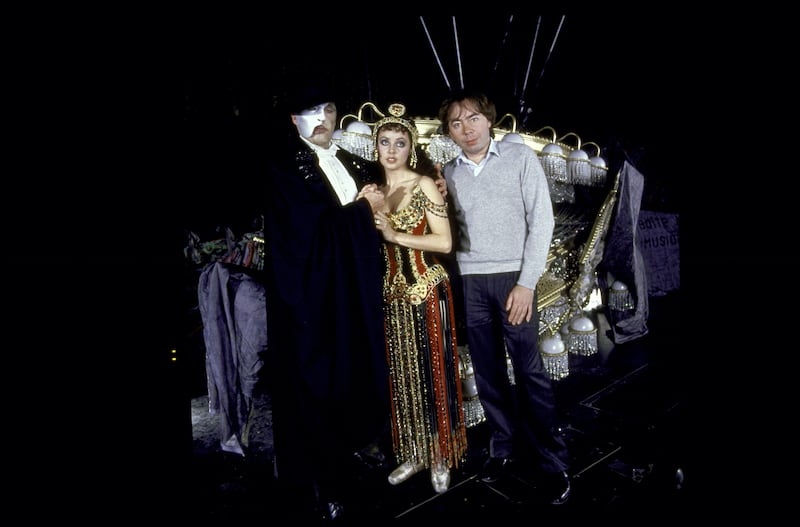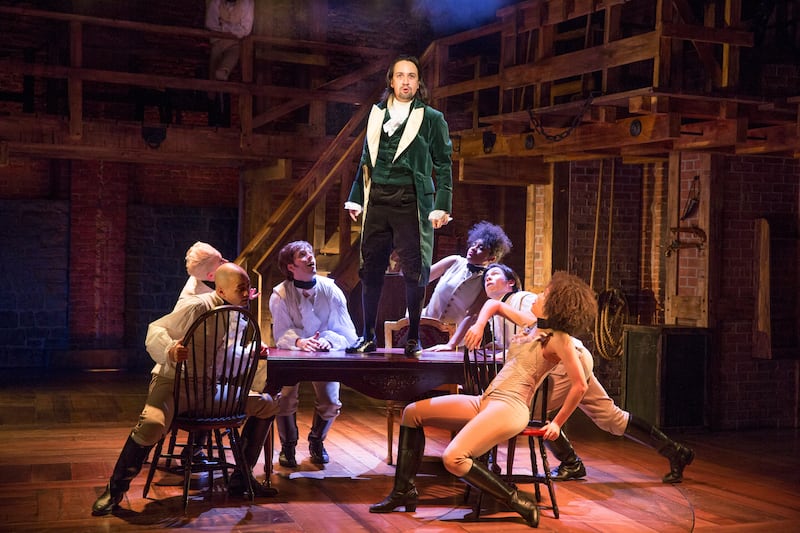Show Boat
(1927) Music by Jerome Kerns. Lyrics and book by Oscar Hammerstein II
Adapted from the novel by Edna Ferber, this 1927 musical about an entertainment cruise ship called the Cotton Blossom brought a serious dramatic edge to American musical theatre, which was dominated by revues such as the Ziegfeld Follies. Show Boat was groundbreaking in representational terms, too, featuring an integrated cast in its premiere production, and an interracial marriage as a key plotline. The show’s best song, Ol’ Man River, was written as a stunning solo for a minor black stevedore. Contemporary productions have to find a way to deal with significant racial stereotyping.
Oklahoma!
(1943) Music by Richard Rodgers. Lyrics and book by Oscar Hammerstein II

Oscar Hammerstein’s collaborations with Richard Rodgers produced some of the most influential stage musicals of the 1940s and 1950s. The Sound of Music is their best-known, thanks to Julie Andrews’ iconic performance in the filmed version from 1965. Oklahoma!, their first collaboration, set out their musical storytelling skills: a romantic plot, a pastoral setting, the warm romanticism of Oh, What a Beautiful Mornin’ and Oklahoma!, the sparky humour of I Cain’t Say No. They also added dramatic depth to the popular form by firmly integrating song and dance into the plot. Crucially, Oklahoma! largely avoids the accusations of cultural appropriation that have dogged South Pacific and The King and I in recent times, although Bartlett Sher’s productions at Lincoln Center, in New York, have managed to redeem both.
Annie Get Your Gun
(1946) Music and lyrics by Irving Berlin. Book by Dorothy and Herbert Fields
Irving Berlin was already one of the most popular songwriters in the United States before he made his full Broadway debut with Annie Get Your Gun. A prolific writer of ragtime tunes, he was the most popular of the Tin Pan Alley crew and a stalwart of the revue scene: Alexander’s Ragtime Band, Puttin’ on the Ritz and Always were Berlin classics. When the prolific composer Jerome Kern died while originating Annie Get Your Gun, Berlin got the opportunity to bring a narrative drive to his musical skills. He successfully used the songs to develop plot and character, but Anything You Can Do and There’s No Business Like Show Business allowed him to showcase his stand-alone showstopping impulses too.
My Fair Lady
(1956) Music by Alan Jay Lerner. Lyrics and book by Frederick Loewe

George Bernard Shaw was not keen on the idea of a musical adaptation of his popular play Pygmalion, about a working-class girl remade in the image of a patronising British toff. By the time a musical version was ready for the stage, however, Shaw was long dead. Although an adaptation had confounded Rodgers and Hammerstein, Lerner and Loewe’s sixth collaboration managed to balance romanticism with intellectualism. The colonial undertow of the story’s themes are as strong as the inevitable romantic connection between the two leads. Why Can’t the English? is every bit as memorable as I Could Have Danced All Night. Royalties from the musical’s success provided a long-standing boon to Shaw’s estate that even the famously stern playwright would approve of.
RM Block
West Side Story
(1957) Music by Leonard Bernstein. Lyrics by Stephen Sondheim. Book by Arthur Laurents

That Leonard Bernstein was music director of the New York Philharmonic in the years when he composed the score for West Side Story speaks to the respectful relationship between classical music and popular musical theatre at the time. Celebrated for his symphonies, the prolific New Yorker was also well known for his work on Broadway. He cocreated the ballet confection On the Town with Jerome Robbins, who would also direct and choreograph West Side Story, a contemporary version of Romeo and Juliet. The score uses the found city sounds of urban youth alongside operatic inflections and symphonic themes to create what remains a singular piece of work. A young Stephen Sondheim wrote the lyrics; the musical’s success proved to be his big break.
Fiddler on the Roof
(1964) Music by Jerry Bock. Lyrics by Sheldon Harnick. Book by Joseph Stein
Fiddler on the Roof is a story of Jewish life in imperial Russia, culminating in the pogroms that brought many of the ancestors of the famous Jewish-American composers to their new homeland. Thematically bleak, there is joy in Jerry Bock’s liberal use of Yiddish musical themes and instrumentation, echoed by the anthemic celebratory song of the prologue, which lays down its stake for tradition.
Cabaret
(1966) Music by John Kander. Lyrics by Fred Ebb. Book by Joe Masteroff

A musical adaptation of Christopher Isherwood’s Goodbye to Berlin, John Kander and Fred Ebb’s hedonistic Jazz Age musical was originally conceived as a vehicle for Julie Andrews, but her agent turned down the role of Sally Bowles on her behalf on moral grounds. The score follows a cabaret concept, blending straight cabaret numbers with expository songs. Both bring a welcome Weimar vibe of authenticity. The effect is to cast the audience as the audience at the Kit Kat Club, an idea pushed to brilliant effect in the recent London revival starring Jessie Buckley and Eddie Redmayne.
Company
(1970) Music and lyrics by Stephen Sondheim. Book by George Furth
The late Stephen Sondheim is a Marmite choice: as many musical theatre fans loathe as love his complex compositions, which are elevated by offbeat subject matters: serial killers (Sweeney Todd: The Demon Barber of Fleet Street), assassins (Assassins), pointillist painting (Sunday in the Park with George). Theatre was by far his most famous subject matter, providing settings and themes for Gypsy, Follies and Merrily We Roll Along, but the concept musical Company, with its romantic drive and showstopping finale, Being Alive – surely Sondheim’s most stirring song – is also a firm favourite. (Coincidentally, as a neighbour of Oscar Hammerstein during his childhood, Sondheim had an informal, life-changing mentorship with the playwright and lyricist.)
Les Misérables
(1980) Music by Claude-Michel Schönberg. English lyrics by Herbert Kretzmer. Book by Alain Boublil
The world has the British impresario Cameron Mackintosh, who brought Andrew Lloyd Webber and Tim Rice’s Cats to Broadway, to thank for spotting the stage potential of this story of the French Revolution and commissioning an English version. It debuted at the Royal Shakespeare Company’s Barbican home to mixed reviews, but public opinion changed its fortune. Big solos such as I Dreamed a Dream and One Day More have gone on to have lives of their own, but it is the powerful chorus numbers that give Schönberg’s score its edge.
Phantom of the Opera
(1986) Music by Andrew Lloyd Webber. Lyrics by Charles Hart. Book by Richard Stilgoe

From his very first collaborations with Tim Rice, Andrew Lloyd Webber embraced the influence of the growing pop and rock craze on his musical compositions. His first outings on the musical-theatre stage blended biblical subject matter with a whole variety of popular genres. By the time Phantom came along, however, he had settled into a signature style of synthesised and operatic bombast, and Phantom was a brilliant vehicle for his talents, as well as for those of Sarah Brightman, his wife at the time, who originated the role of Christine. After Les Mis, with which it shares a setting as well as an instrumental theme, it is the longest-running show in the West End.
The Lion King: The Musical
(1997) Music by Elton John and Lebo M. Lyrics by Tim Rice. Book by Roger Allers and Irene Mecchi
The second venture from Disney Theatrical, the live wing of the animation studio, The Lion King: The Musical remains its best-known production. It is less memorable for its music, which is by Elton John and the South African composer Lebo M, than for its iconic visual staging, by Julie Taymor, which integrated animal masks and puppets to stunning effect. Taymor was rewarded with a Tony for best musical direction, making her the first woman to win the award. The UK production has been running at the Lyceum Theatre for more than 20 years. A touring version returns to the Bord Gáis Energy Theatre in Dublin next week.
Hamilton
(2015) Lyrics, music and book by Lin-Manuel Miranda

Love or loathe the raucous rap rhythms that fuel this historical musical, but there’s no denying the effect that Lin-Manuel Miranda’s musical biodrama about the unsung founding father of the United States has had on American musical theatre, making discourse about diversity and representation mainstream. When it transferred to Broadway it was a box-office smash: everyone wanted to be in the room where it happened. Speedy spoken-word battles drive the political narrative. Smooth grooves inspired by soul and R&B give it an emotional heart. A UK-based touring production comes to the Bord Gáis Energy Theatre in 2024, for the musical’s Irish premiere. Tickets have almost sold out already.
The Lion King: The Musical is at the Bord Gáis Energy Theatre, Dublin 2, from Thursday September 28th until Saturday November 11th



















